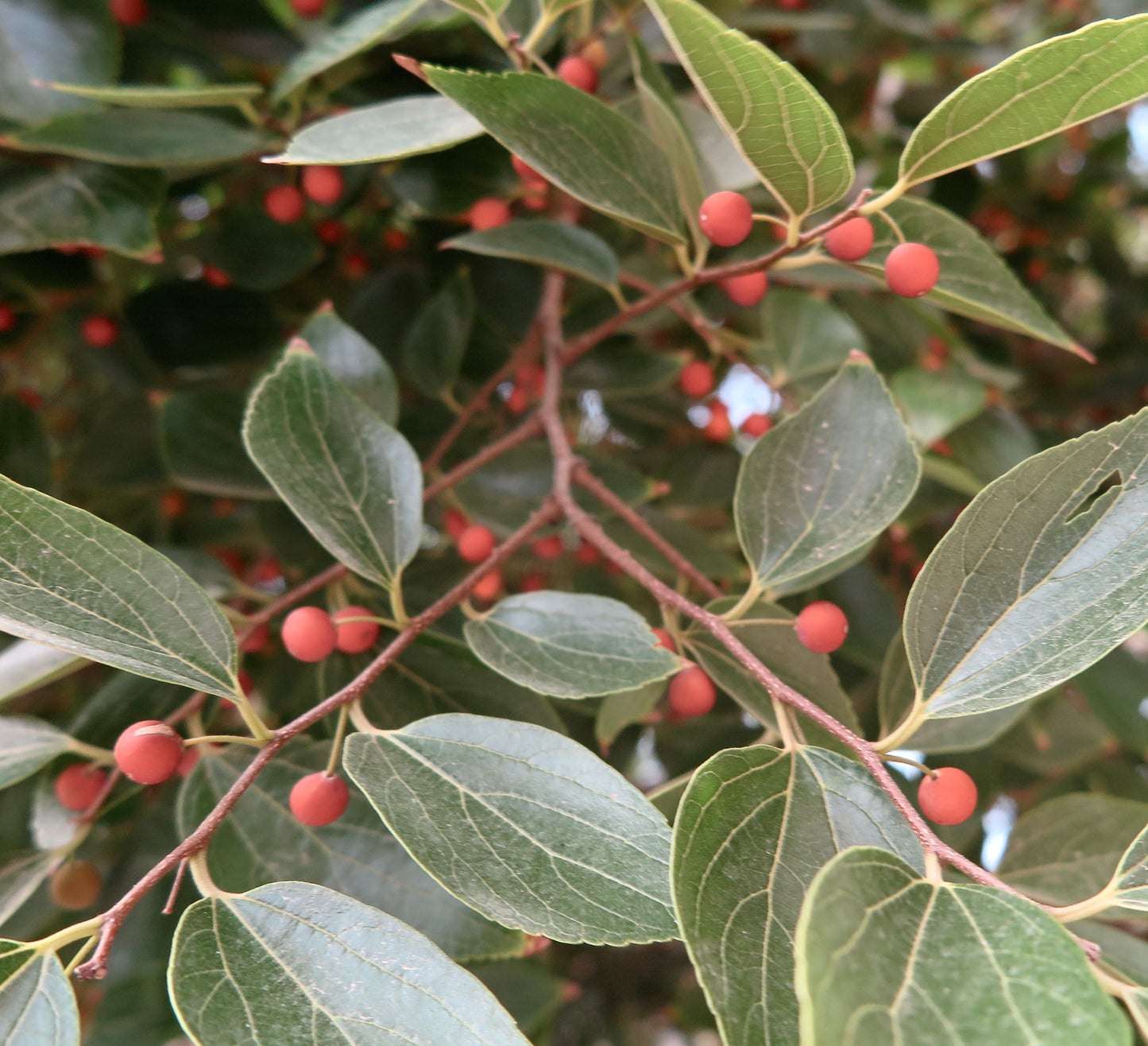- Catalogue Plants
Celtis occidentalis | Common hackberry | Northern hackberry
Celtis occidentalis | Common hackberry | Northern hackberry
Couldn't load pickup availability
Plant Description
The Celtis occidentalis is a remarkable deciduous tree native to eastern North America. Often called the hackberry, this hardwood species stands out for its rugged bark and resilient nature. The Celtis occidentalis tree grows well in various environments, especially in riparian zones, where it contributes to ecosystem stability. Its broad canopy offers shade and a distinct silhouette in the landscape.
The Celtis occidentalis is prized for its adaptability and unique features. People often recognize it as the common hackberry or the North American hackberry. This Midwest tree develops small, dark berries that attract birds, adding ornamental and ecological value. Its leaves are simple and serrated, turning yellow in autumn, which enhances its seasonal beauty.
- Rough, corky bark with distinctive ridges and warts
- Small, sweet berries that feed local wildlife
- Leaves with fine serrations and pointed tips
- Strong hardwood used in furniture and tool making
- Thrives in moist, well-drained soils near waterways
As a Celtis occidentalis tree, this species enriches native landscapes and urban settings alike. Its resilience and ornamental traits make it a valuable addition to many environments. Whether appreciated for its ecological role or its visual appeal, the hackberry continues to be a favored native hardwood species.
IMPORTANT: The pictures show the mother plant, which is not for sale. The offer includes a plant with the dimensions stated in the description.
Botanical family: Cannabaceae
Botanical genus: Celtis
Botanical species: Celtis occidentalis
SKU:WP-2657-S
Cultivation
Cultivation
Info and Disclaimers
Info and Disclaimers
Plant Height:
Plant Diameter:
Pot Size:
Grafted/Not Grafted: Not Grafted
Disclaimer: Be aware that most plants change across seasons. If present foliage, could have been fallen or change in its color.
Share


